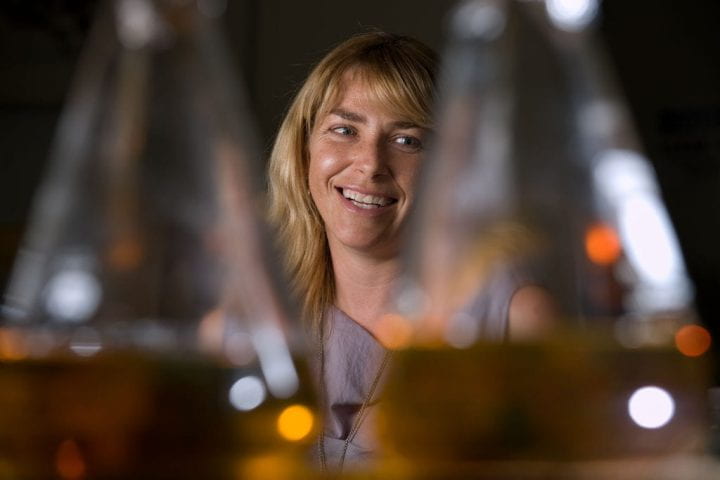Another iron in the fire against TB
UC researchers have found a possible alternate path for TB to spread in the human body.

A tiny protein has been identified by University of California researchers as a possible alternate route for tuberculosis to spread in the human body – which could lead to better treatments for one of the world’s most stubborn diseases.
One in three people around the globe are infected with Mycobacterium tuberculosis, and about 1.8 million die each year of complications, according to the World Health Organization. It’s “a crisis compounded by the emergence of multidrug resistance and the AIDS pandemic,” writes UC Irvine structural biologist Celia Goulding in the March 22 issue of Proceedings of the National Academy of Sciences. “There is an urgent need to understand the pathogen’s survival tactics.”
She and her team have identified one such tactic. For five years, Goulding,
assistant professor of molecular biology & biochemistry, has had
her eye on a particular protein, one of nearly 4,000 associated with the
disease. TB bacteria need iron to grow, and scientists three decades
ago pointed to well-known siderophores – literally “iron carriers” in
Greek – as the main path for tubercular cells to scavenge iron and storm
the human body. But even as multiple variations of the disease have
developed resistance to the drugs long used to combat them in other
ways, efforts to stop siderophores from feeding TB have failed.
Now Goulding and colleagues have shown that the protein she identified can also grab iron from another one known as heme to nurture TB bacteria. They think there’s a chance of shutting off this source – along with the siderophore source – and eradicating the disease.
“It’s very cool,” says Goulding, who notes that 80 percent of the body’s total iron is in the form of heme, a key part of hemoglobin in red blood cells. Other studies had found that anthrax and streptococcus cells could feed off heme, and she was convinced the TB pathogen could as well. After more than four years of dogged research, Goulding and a team of interdisciplinary researchers from UCI and UCLA proved she was right.
UCI researchers scientists first brewed up large batches of a rich broth containing an extract of yeast, a type of sugar and other ingredients. Then a harmless form of E. coli – which produces Goulding’s protein – was added to the mix. Goulding painstakingly determined the three-dimensional atomic structure of the atoms of the protein.
Next, UCLA microbiologists showed that within the deadly TB bacteria, the same protein was gobbling up iron. Now all the researchers are trying to develop drugs that can cap the protein or otherwise starve it of iron, providing an effective new means of keeping the deadly disease from spreading into the lungs and elsewhere.
“One of the most exciting discoveries is that the Goulding group has clearly demonstrated a novel heme acquisition pathway for tuberculosis. This pathway is associated with important proteins that are very likely to become major drug targets for the disease,” says James Sacchettini, professor of biochemistry, biophysics and chemistry at Texas A&M University, who researches TB but was not involved in the study.
People with AIDS, the elderly and others with weak immune systems are particularly susceptible to TB. Multidrug-resistant strains can require months of painful drug treatments or surgery, which still may not kill the disease. Combining those approaches with new ones could provide the necessary knockout punch. Goulding cautions, however, that it could take a decade to develop and test such treatments for effectiveness and safety.
The work was funded by grants from the national and California American Lung Association and National Institutes of Health. Fellow authors include Christine Harmston, Cedric Owens, Nicholas Chim, Angelina Iniguez, Robert Morse and Lisa McMath at UCI; and Michael Tullius, Jacqueline Kimmey, Michael Sawaya, Julian Whitelegge and Marcus Horwitz at UCLA.
